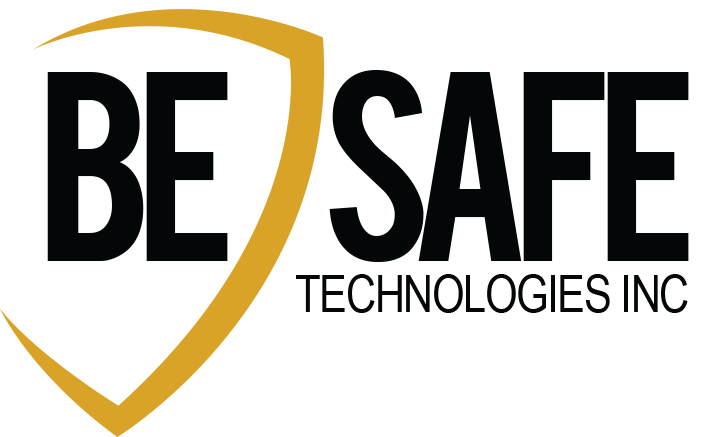Teachers love to teach. The art of imparting valuable knowledge to others, especially the youth of the future, is rewarding work. Because teachers understand the value of learning, they enjoy learning from one another. As an ancient proverb says: “As iron sharpens iron, so one man sharpens the face (or skills) of another.”
TED has grown in popularity over the years as a priceless resource for people of all ages, backgrounds, and industries. Some of the brightest minds and influential people from around the world have shared valuable ideas with one another through passionate, informed talks, to the benefit of millions. They’re smart, funny, poignant, and memorable.
There are now thousands of TED and TEDx talks to choose from on YouTube, and we’ve created a collection of our favorite talks for teachers, educators, and school district leaders.. Here are 7 of the best TED talks on education.
Why open a school? To close a prison | Nadia Lopez
Nadia Lopez is the founding principal of the Mott Hall Bridges Academy, a district public middle school in the Brownsville neighborhood of Brooklyn, NY. When the school opened in 2010, her goal was based on a famous quote by French writer Victor Hugo: “He who opens a school door, closes a prison.”
She wanted to help the youth in that area to set lifelong goals for themselves, and to rise above the negative circumstances of their surroundings. It was an uphill battle, since this was one of the most violent, crime-filled boroughs in all of New York City.
Just how bad was it? One day, Nadia asked one of her young scholars (this is how they refer to students at the Academy, to motivate a life of learning) who was 13 at the time, where he saw himself in 5 years. His answer?
“I don’t know if I’m going to live that long.”
In this exciting talk, Nadia discusses some of the truly enriching things she experienced through the years at Mott Hill. How the kids in her care grew, and learned to see life beyond Brooklyn, beyond minimum wage jobs and gang activity. And she shares some of the keys for adults caring for disadvantaged youth, and how they can motivate their students just the same.
Do schools kill creativity? | Sir Ken Robinson
Don’t worry, he’s not calling for your jobs!
Sir Ken Robinson is a British author, distinguished professor at Warwick University, and an international consultant and advisor on education. He’s also brilliantly funny.
In one of his earlier TED talks, Sir Ken Robinson discusses the value of creativity. He believes that if we aren’t careful, our school system could stifle creativity, because a child may learn to be afraid of making mistakes. And if we are afraid of failing, we are afraid to take risks, meaning we are afraid to express creativity.
In his words, kids don’t learn to be creative, creativity is educated out of them.
He makes the statement that our education system is geared toward the end goal of university education – and that it needs to change. Many creative, talented people are not reaching their full potential, because their creativity is stigmatized through their school years.
It’s a talk that is certainly thought-provoking, and worth a listen.
What if students controlled their own learning? | Peter Hutton
In most schools, a typical classroom setting could easily be compared to getting on a bus. The teacher hops in the driver’s seat, and away you go. No time to stop for any sightseeing, because we’re on a tight schedule! Some kids can learn quickly enough that it’s not an issue, whereas others might struggle with not being able to ask more questions or reflect on the material.
So Peter Hutton and his staff sought to rethink the format of school education. What if it was possible for students to control their own education in a way? To stop the bus, get out and smell the roses?
They decided to adopt a pretty bold policy: Yes is the default. Meaning, when they received a request or suggestion from a student or their parents, they would always answer yes – as long as they didn’t conflict with the following guidelines:
- Would it take too much time?
- Would it take too much money?
- Would it negatively impact somebody else?
For example, one request was from a 7th-grade student who really loved physics. He asked if he could sit in on 12th-grade physics classes, and they agreed, as long as he agreed not to ask questions during it (since he would be skipping 5 grades worth of answers to said questions). He benefited greatly, often spending additional time researching what he didn’t know.
As a result, he ended up having such a knowledge of physics that he surpassed some of his teachers.
They don’t hand out homework to their junior students. Instead, they ask for 10 hours of “Home Learning” from their students, which they can spend learning a language, an instrument, or cooking for the family, just to name a few examples. Students are allowed to pick 100% of their classes after their first year, so they can truly take control of their learning.
They have a barista class, working with animals, where they have their own llamas, lizards, and chickens. And my favorite: Geek Sciences. You should see the stuff these kids come up with.
This video is definitely worth a watch. It may inspire you to make similar changes to your schools’ education methods, sparking curiosity in your students and unleashing their potential.
Teach every child about food | Jamie Oliver
Jamie Oliver is a world-famous chef and food educator. He visited TED to give an important message: We absolutely need to tackle obesity in America. How do we do that?
It starts by educating children about food.
In most elementary school and secondary schools, very little time (if any time at all) is spent on teaching kids about food. What’s healthy, what’s not. Or even how to cook food. One telling bit of evidence in this video is a clip of Jamie visiting an American classroom. He shows kids everything from tomatoes and potatoes, to mushrooms and cauliflower. And none of these kids even knew what was in front of them.
As a result, generations of people are growing up with no basic knowledge of healthy eating. What’s worse, is that not only are schools not educating children – they’re encouraging bad eating. Fast food items like pizza, hot dogs, and sugary beverages are served in schools across the country. And it’s slowly killing them. Heart disease, a diet-caused disease, is the number one killer in America by far.
Jamie stresses the need for schools to teach kids about food. As simple as two 1-hour sessions a week can help them be informed about eating, cooking, and grocery shopping. Watch his riveting and sobering TED talk below.
How to design a library that makes kids want to read | Michael Bierut
Michael Bierut is a celebrity in the design world. He has helped to create logos and spaces for companies like The New York Times, Saks Fifth Avenue, Mastercard, and the New York Jets, to name a few.
He also took the lead on a project for the New York School System called The Library Initiative. Its goal was to revamp the old, musty, decrepit libraries of New York City schools, and make them an attractive, fun place for students to read and learn.
When they began, his focus was to make reading “fun” and “new”. He thought kids were bored of libraries, the effect of our modern electronic world. But he soon learned this wasn’t the case. The school libraries in question were just broken, uninviting spaces. The students had never experienced what a library could – and should- be.
It changed his understanding of what students need to enjoy taking in knowledge.
In his TED talk, he describes the process behind their design philosophies, and also a few of the lessons he learned along the way. The greatest thing he experienced was the unintended consequences of these new libraries. Not only did the students benefit, but even the librarians and school faculty members.
It’s a great, fun story. And it provides inspiration for school district leaders around the country.
Our failing schools. Enough is enough! | Geoffrey Canada
Bank used to be open Monday to Friday from 10-3. They even closed during the lunch hour. It was extremely inconvenient for literally every customer because those hours made it impossible to get to the bank. Basically ever.
So why did they do it? Mostly because it was convenient for the banks. But they realized it was a bad business model, and changed it.
Geoffrey Canada argues that schools need to do the same. After 0ver 50 years of the same education style, drop out rates are not getting any better. Why keep doing the same thing and expecting the same results? It’s time to change the model.
Enjoy this passionate talk outlining aspects of the education system that need work, from small changes to big ones.
How to escape education’s death valley | Sir Ken Robinson
He’s back! In one of his most recent TED talks on education, Sir Ken Robinson further expounds on his belief that America’s education system needs to do a better job in encouraging and nurturing creativity among students.
The program No Child Left Behind was created to help more kids successfully complete school to graduation. Unfortunately, the US is currently seeing dropout rates of up to 60% in certain states. Mr. Robinson argues that this program is ironically named, since it’s having the opposite effect, and leaving millions of kids behind.
What can be done to remedy the situation? No two kids are the same. Even in the same family, siblings can vary drastically, as any parent will tell you. Parents need to adjust their methods of instruction and discipline based on the child. So how can we expect all children to conform to the same standard of school education?
How can we use standardized testing to supplement learning rather than obstruct it? How can we help children with supposed ADHD to learn in their own way? How can teachers and educators spark curiosity in their students, and unleash the natural powers of creativity that all children possess?
All of this is discussed in Ken Robinson’s talk, with his patented sense of humor on full display.
BeSafe Technologies has been providing innovative safety and security technology to schools since 1999. In 2019, we were awarded the prestigious IDC Smart Buildings Award for our school security solutions.
Reach out to us if you have a question about your current school’s security and would like to know what can be done to improve it.
We would love to help 🙂




